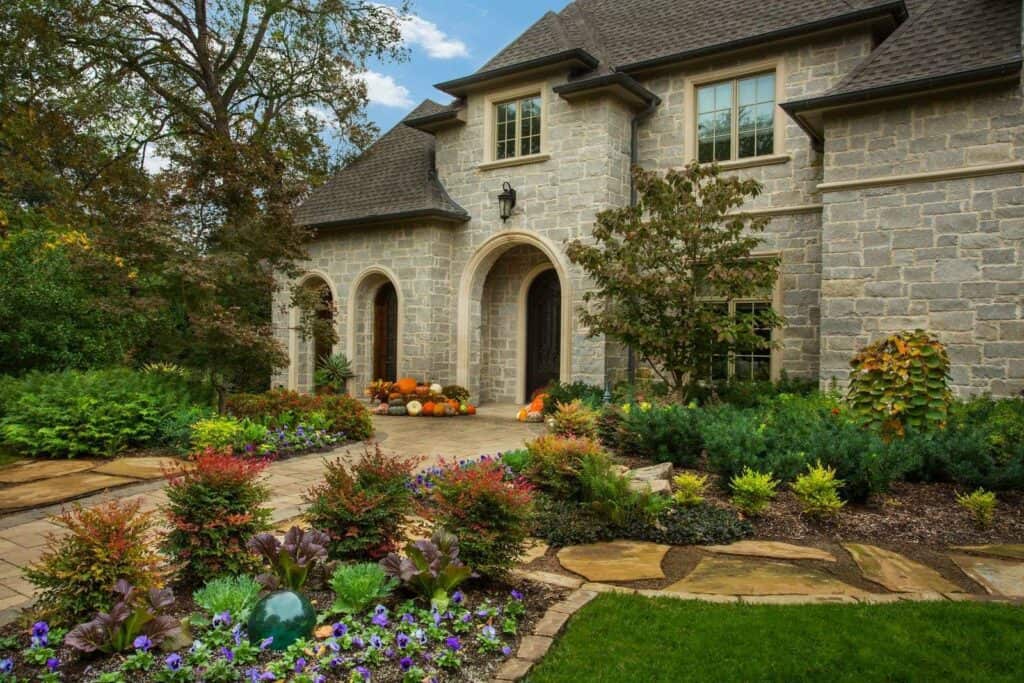Everything about Landscape Design
Wiki Article
9 Easy Facts About Landscape Design Explained
Table of ContentsSome Of Landscape Design4 Simple Techniques For Landscape DesignThe 9-Second Trick For Landscape DesignLandscape Design Can Be Fun For EveryoneMore About Landscape Design
A lawn can typically be divided right into 3 areas: public (the front backyard), personal (the back yard), and solution (normally the side lawn). The location of task areas depends primarily on the kind of area, the dimension of area needed, the kind of task, and the preferred distance to various other activities and frameworks.The outdoors wall surface of your home often acts as the very first wall or starting point of an outdoor area. Incompatible usages must be separated, and related tasks, such as food preparation and dining, should be assembled to make the backyard more effective and enjoyable. When utilizing hardscape to create rooms, use building product comparable to that used in your home for connection from the home right into the garden.
Linked rooms. Credit Scores: Gail Hansen, UF/IFAS Making use of similar hardscape attributes and repeating plants pulls the eye around the garden. Crucial factors in the process can be emphasized with growings or features that draw attention and motivate activity in a specific instructions. Relocating along the course takes a person from one location to the following and permits the customer to have a variety of experiences.
The smart Trick of Landscape Design That Nobody is Talking About

For mental comfort plants are utilized as physical or suggested barriers for personal privacy and safety and security. Physical barriers obstruct both the view and accessibility to a room and include fences, wall surfaces and plant hedges. Indicated barriers, normally low growing plants, block access yet not the sight (Figure 9). Various other features of plants include cleansing the air, preventing erosion and dirt loss, preserving wetness in the soil, and returning raw material to the dirt.
Physical and suggested barriers. Credit Report: Gail Hansen, UF/IFAS For these reasons, the kinds of plants to be made use of (such as trees, bushes, or groundcovers) should be selected in the beginning of planning (Landscape Design). Plant types are picked for their useful abilities so that their future objective and required space can be considered at the exact same time

Unknown Facts About Landscape Design
Each plant mass is in front of, behind, or following to, another mass. Credit Rating: Gail Hansen, UF/IFAS Repeating plants within a mass and repeating masses with similar plants links the garden together. The individual plant attributes have to be thought about to effectively layer and mass plants.All plant structures start with the major structure plants, the large, mostly evergreen background plants-such as the trees and large bushes. These plants different or enframe areas, manage the visit size of the space, and give the beginning factor for selecting the proper qualities of the 2nd layer, midground plants, for massing and infill.
Essential factors in the yard need to be highlighted by the use one-of-a-kind plants, distinctive frameworks, or yard ornaments. Noting limits or entryways to areas can be made with gateways, arbors, and actions, or with making use of special and vivid plants. The kind and/or style motif of the yard will certainly usually assist figure out the crucial points and how they need to be highlighted.
Various other crucial locations in the backyard are centerpieces, which is utilized to visually arrange a landscaped area. The sort of focal factor typically depends on the seeing viewpoint. Various perspectives or perspectives can expose different make-ups in the landscape that may need a range of centerpieces. Contrasting appearance, shape, dimension and color will certainly record and hold the eye.
The Ultimate Guide To Landscape Design

Figure 13. Plant types. Credit: Gail Hansen, UF/IFAS After form, texture is the following leading function of a plant; coarse, tool and fine appearances can be made use of for contrast and emphasis in the landscape. Kind and texture both trump color in the yard for the majority of the year. During certain periods, color will certainly be the directory most recognizable attribute of the yard.
The enjoyable aroma of plants, the sound of wind in the trees, the audio and appearance of water, and the shades and structures of sculptures, pots and garden furniture all include in the experience of the garden. One information that is commonly neglected is the impact of light on the visual appeals of the plants.

Little Known Questions About Landscape Design.
It is necessary to know the eventual fully grown dimension of plants so they can be put in the right place and spaced correctly when they are set up. Giving plants space to expand is an obstacle because the common fully grown size is typically based upon ideal expanding conditions and the environmental problems of a site may trigger a plant to expand larger or stay smaller sized.
Report this wiki page